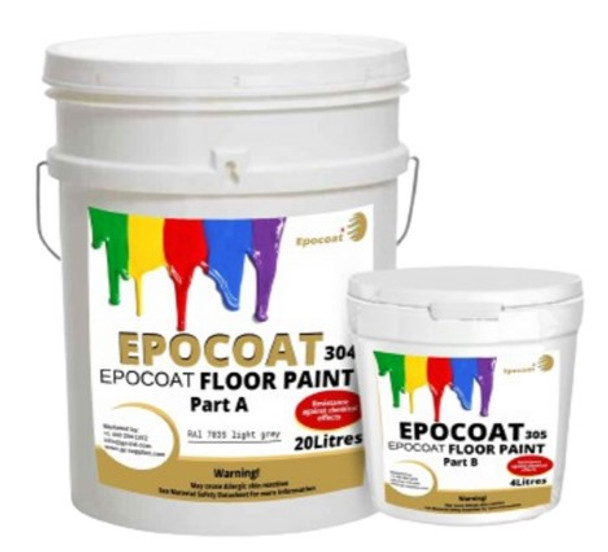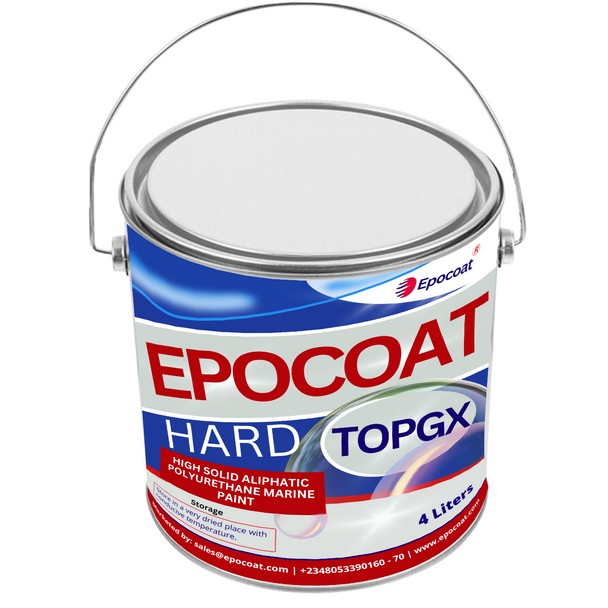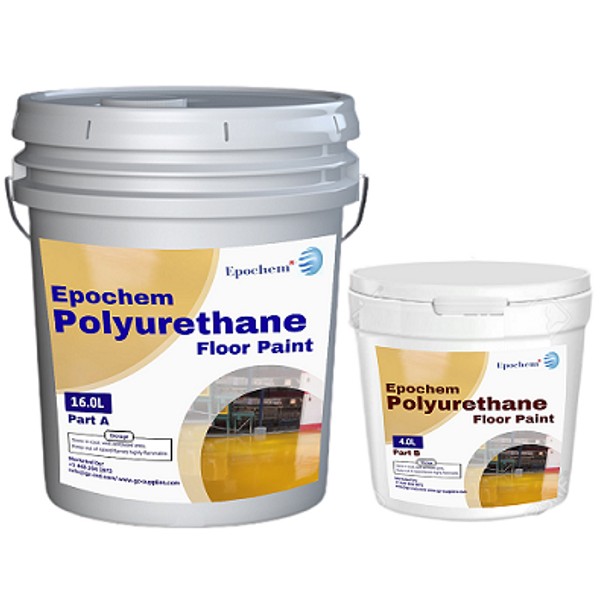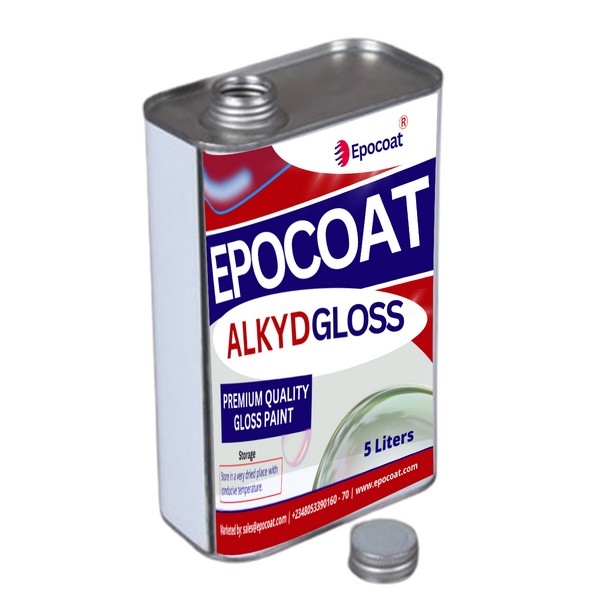How to Choose the Right Floor Paint: Tips for Durability and Aesthetics
Key Takeaway
- Consider the Type of Surface: Different floor materials, such as concrete, wood, or tile, require specific types of paint for optimal adhesion and durability. Choose a Floor paint compatible with your flooring material.
- Evaluate Traffic Levels: For high-traffic areas, select a heavy-duty, abrasion-resistant paint, such as epoxy or polyurethane, to ensure long-lasting protection against wear and tear.
- Focus on Durability Needs: If the floor is exposed to moisture, chemicals, or heavy equipment, look for paint with added resistance to water, chemicals, and impact to prevent premature damage.
Introduction
Choosing the right floor paint involves balancing durability with aesthetic appeal, ensuring a finish that will withstand use while enhancing the appearance of your space. Start by considering the type of flooring material, as each surface—whether concrete, wood, or tile—requires specific paint for optimal adhesion and longevity. In high-traffic areas, prioritize durability by selecting a paint with abrasion and impact resistance, such as epoxy or polyurethane, especially if the floor will be exposed to moisture, chemicals, or heavy equipment.
Finishes also play an important role; glossier finishes offer easier cleaning and stain resistance but may highlight imperfections, while matte finishes provide a softer look. Safety is essential, particularly in wet or high-traffic areas, where anti-slip additives can help prevent accidents.
Additionally, color choices should match both the visual and practical needs of the space; lighter tones can make a room feel larger, while darker shades hide scuffs. Proper surface preparation—including cleaning, repairing, and priming—ensures the best results, with maintenance requirements varying based on the paint selected. Lastly, eco-friendly, low-VOC paints are available for those seeking a more sustainable option without compromising on performance.
This article aims to guide you through the factors to consider when selecting floor paint, ensuring that you make an informed decision that meets your needs.
EPOCOAT 304/305 Floor Paint
Understanding Floor Paint
Definition and Purpose of Floor Paint
Floor paint is specifically formulated to provide a protective and decorative finish on various surfaces. Unlike regular wall paint, floor paint is designed to withstand foot traffic, resist stains, and handle different environmental conditions. It can be used in residential, commercial, and industrial settings, providing both durability and visual appeal.
Different Types of Floor Paint
When choosing floor paint, it’s important to understand the different types available:
1. Epoxy Paint: Known for its exceptional durability and resistance to chemicals, moisture, and stains, epoxy paint is often used in garages and industrial settings. It consists of a resin and hardener that, when mixed, create a strong bond with the surface, making it ideal for high-traffic areas.
2. Latex Paint: Water-based latex paint is easier to work with and dries quickly, making it a popular choice for indoor applications. While it may not be as durable as epoxy, it offers good flexibility and is available in a variety of colors and finishes.
3. Oil-Based Paint: This type of paint provides a durable and hard finish that is ideal for areas exposed to moisture. However, oil-based paints take longer to dry and require solvents for cleanup, making them less convenient for some projects.
Typical Applications
Floor paint can be applied in various settings, including:
1. Garage Floors: Protecting the concrete surface from oil stains and damage.
2. Interior Floors: Enhancing the aesthetic appeal of wood, concrete, or tile floors.
3. Outdoor Patios: Providing a weather-resistant finish that can withstand the elements.
Epocoat Hard top GX (High Solid Aliphatic Polyurethane Marine Paint)
Factors to Consider When Choosing Floor Paint
Durability
Durability is a critical factor when selecting floor paint, particularly for high-traffic areas. Consider the following:
1. Importance of Durability: In spaces where heavy foot traffic occurs, such as entryways or commercial areas, choosing a paint that can withstand wear and tear is vital. Durable floor paint will maintain its appearance and protect the underlying surface over time.
2. Resistance to Scratches, Chemicals, and Moisture: Different paints offer varying levels of resistance to damage. For example, epoxy paint is highly resistant to scratches and chemicals, making it suitable for garages and workshops. Latex paints, while less durable, can still provide good protection for interior floors.
3. Longevity Expectations: Understand the expected lifespan of the paint based on the material type and usage. Epoxy coatings can last several years with proper care, while latex may require more frequent touch-ups.
Aesthetics
Aesthetics play a significant role in the overall look of your space. Consider the following aspects:
1. Color Selection and Its Impact on Space: The color of the floor paint can dramatically alter the perception of space. Lighter colors can make a room feel larger and more open, while darker shades add warmth and intimacy. Choose a color that complements your decor and suits the atmosphere you wish to create.
2. Finishes: Glossy vs. Matte: The finish of the paint can affect both aesthetics and functionality. Glossy finishes are easier to clean and can enhance brightness, while matte finishes offer a more subdued look. Consider where the paint will be used to determine the best finish for your needs.
3. Patterns and Designs: If you want to add a creative touch, consider using stencils or techniques like faux finishes. Patterns can create visual interest and customize the space to reflect your style.
Environmental Considerations
As environmental awareness grows, many consumers seek floor paints that are eco-friendly and safe to use indoors.
1. Low VOC (Volatile Organic Compounds) Options: VOCs are chemicals found in many paints that can contribute to air pollution and health issues. Opting for low VOC or VOC-free floor paints can improve indoor air quality and minimize environmental impact. These paints often perform well and come in a variety of finishes and colors.
2. Eco-Friendly Materials and Practices: Look for brands that prioritize sustainability in their manufacturing processes. Some paints are made from natural ingredients and are biodegradable, making them a healthier choice for both your home and the planet.
Epochem Polyurethane Floor Paint
Preparing for Application
Proper preparation is essential for achieving the best results with floor paint.
Surface Preparation: Cleaning and Priming
Before applying paint, the surface must be clean, dry, and free of any debris. Here’s how to prepare:
1. Cleaning: Use a suitable cleaner to remove dirt, grease, and previous coatings. For concrete surfaces, a power washer can be effective.
2. Repairing Damages: Fill in cracks or holes with a suitable filler and allow it to cure.
3. Priming: Depending on the paint type, a primer may be necessary to ensure good adhesion. Select a primer that is compatible with your chosen paint.
Choosing the Right Tools and Equipment
Selecting the right tools will make the application process smoother:
1. Rollers and Brushes: Use high-quality rollers for large areas and brushes for edges and detail work.
2. Sprayers: For a flawless finish on large surfaces, consider using a paint sprayer.
3. Protective Gear: Always wear gloves, masks, and goggles to protect yourself from fumes and splatters.
Safety Precautions During Application
Ensure good ventilation in the area where you’re painting. Open windows and doors or use fans to circulate air. If using oil-based paints, be extra cautious due to their strong fumes.
Application Process
Once you’ve prepared the surface and gathered your tools, it’s time to paint.
Step-by-Step Guide to Applying Floor Paint
1. Priming the Surface: If required, apply a primer evenly across the surface and allow it to dry completely.
2. Mixing the Paint: Thoroughly mix the paint according to the manufacturer’s instructions. For epoxy paints, ensure the resin and hardener are combined correctly.
3. Application Techniques:
Roller: Use a roller for large areas to ensure even coverage.
Brush: Use a brush for edges and corners to achieve clean lines.
Sprayer: If using a sprayer, maintain a consistent distance from the surface to avoid drips.
4. Drying and Curing Times: Follow the manufacturer’s instructions for drying and curing times. It’s essential to allow adequate time before walking on or placing objects on the newly painted surface.
Tips for Achieving a Smooth Finish
1. Apply multiple thin coats rather than one thick coat to avoid runs and drips.
2. Use long, even strokes to promote an even application.
Common Mistakes to Avoid
1. Skipping surface preparation, which can lead to poor adhesion and finish.
2. Overloading the brush or roller, which can create drips.
3. Neglecting to allow adequate drying time between coats.
Epocoat Alykd Gloss
Maintenance and Care
After applying floor paint, proper maintenance is crucial to preserving its appearance and durability.
Cleaning and Upkeep of Painted Floors
1. Regular Cleaning: Sweep or vacuum regularly to remove dirt and debris. Use a mild detergent with warm water for deeper cleaning, avoiding harsh chemicals that can damage the finish.
2. Avoid Excess Water: Excessive water can seep under the paint and cause peeling. Use damp mops instead of soaking the floor.
Repairing Scratches and Damages
1. Touch-Ups: Keep a small amount of leftover paint for touch-ups. If you notice scratches or chips, clean the area and apply a small amount of paint to restore the finish.
2. Reapplication: Depending on wear, consider reapplying a fresh coat of paint every few years to maintain aesthetics and protection.
Repainting: When and How to Do It
1. Signs of Repainting: Look for signs like fading, peeling, or extensive wear. If the surface appears worn out, it may be time to repaint.
2. Preparation: Just like the initial application, prepare the surface by cleaning and potentially sanding it to ensure good adhesion for the new paint.
EPOCOAT GUARD 82 HS (HIGH BUILD ZINC PRIMER)
Frequently Asked Questions
1. What type of paint is best for a garage floor?
Epoxy paint is the best choice for garage floors due to its durability and resistance to chemicals and stains. It provides a hard, protective surface that can withstand heavy traffic.
2. Can I use regular wall paint on my floors?
Regular wall paint is not recommended for floors as it lacks the durability and adhesion required for high-traffic areas. Always choose paint specifically formulated for floors.
3. How long does floor paint last?
The lifespan of floor paint depends on the type used and the amount of foot traffic. Epoxy coatings can last up to 10 years with proper care, while latex paints may require more frequent touch-ups.
4. Do I need to apply a primer before painting?
Using a primer can enhance adhesion and durability, especially on porous surfaces like concrete. It is advisable to follow the manufacturer’s recommendations regarding priming.
5. Is it safe to paint indoors?
Yes, but ensure proper ventilation by opening windows and using fans. Consider low VOC paints to minimize indoor air pollution during and after application.
Related Articles
The Best Floor Paint for Different Types of Flooring
Floor Paint Maintenance: How to Keep Your Floors Looking Their Best
The Science of Floor Paint: How it Works and What to Expect
Readers Also Watched...
Conclusion
In summary, choosing the right floor paint involves considering durability, aesthetics, and the specific needs of your space. By understanding the different types of floor paint, preparing adequately, and following proper application techniques, you can achieve a beautiful and long-lasting finish. Take the time to select a paint that aligns with your vision and needs, and you’ll enjoy the results for years to come.
Ready to start your floor painting project? Explore high-quality floor paints and supplies at Tikweld Welding Supplies. With the right tools and materials, you can transform your space beautifully and durably. Don’t hesitate—take the first step toward a fresh new look today!














